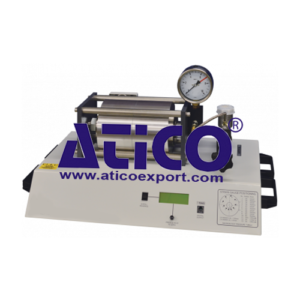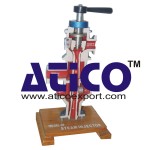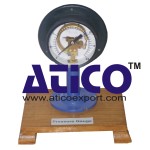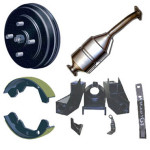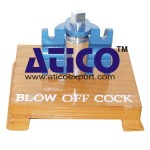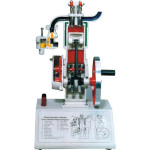Description
Thick Cylinder apparatus allows students to examine radial and hoop stresses and strains in the wall of a thick cylinder. They can then compare experiment results with the theoretical Lamé predictions. It clearly shows the principles, theories and analytical techniques, and provides eff ective, practical support to studies. A sturdy base contains all parts of the Thick Cylinder apparatus. This forms a compact product, ideal for use on a workbench. The apparatus consists of a thick-walled aluminium cylinder, held in a robust frame. The cylinder is in two halves, cemented together. One face of the joint has an eccentric shallow groove that contains ten strain gauges at precise radii and orientation. These gauges measure the radial and hoop strains. Jointing cement fi lls the groove. Strain gauges on the inner and outer walls of the cylinder measure longitudinal and circumferential strains. The cylinder contains oil. To stress the cylinder, students use a hydraulic hand-pump to pressurise the oil. To perform experiments, students set the gauges to zero and use the pump to pressurise the cylinder. They take readings at several stages while increasing the pressure. The results can be taken by hand using the in-built display and pressure gauge and plotted by hand. Alternatively, they can use optional Versatile Data Acquisition System (VDAS®) to capture the data and plot the relevant graphs and export data. They then compare their results with calculations made using theory. A user guide is supplied with the Thick Cylinder apparatus. The guide includes full details of the equipment, detailed experiment procedures, theory and results. For quick and reliable tests, optional VDAS® gives accurate real-time data capture, monitoring and display, calculation and charting of all important readings on a computer (computer not included).
Learning Outcomes
- Radial and hoop strains throughout the cylinder wall
- Radial and hoop stress distribution in the wall
- Longitudinal stress and strain at the outer surface
- Circumferential stress and strains at the inner and outer surfaces
- Comparison with Lamé predictions
- Principal stresses and maximum shear stress
- Appraisal of accuracy of location of strain gauges
Specifications
ATICO is committed to a programme of continuous improvement; hence we reserve the right to alter the design and product specification without prior notice.
Dimension :
700 mm x 400 mm x 370 mm
Net weight:
30 kg
Bench space needed:
1 m x 0.6 m
Oil :
Castor oil
Cylinder material :
Aluminium alloy
Nominal cylinder dimension :
203 mm long, 150 mm outside diameter, 37 mm inside diameter
Pressure :
Displayed by Bourdon gauge, with output for VDAS®
Strain :
Measured by electrical resistance gauges and displayed digitally, with output for VDAS®
Operating Conditions
Operating environment:
Laboratory
Storage temperature range:
–25°C to +55°C (when packed for transport)
Operating temperature range:
+5°C to +40°C
Operating relative humidity range:
80% at temperatures < 31°C decreasing linearly to 50% at 40°C

